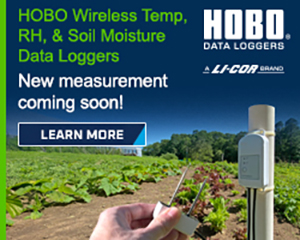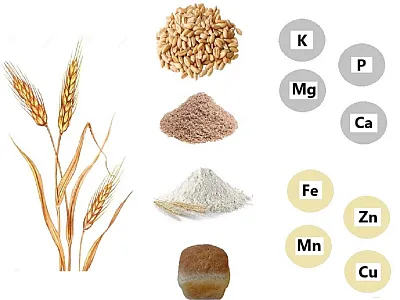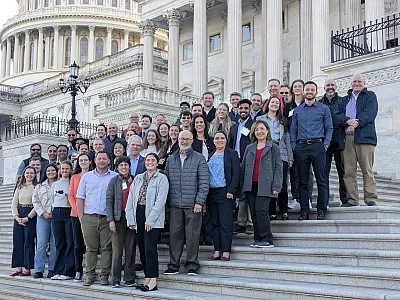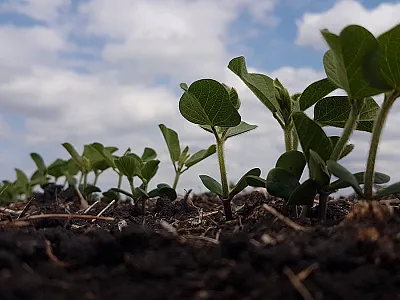Assessing the feasibility of hemp for fiber production in the northeastern United States
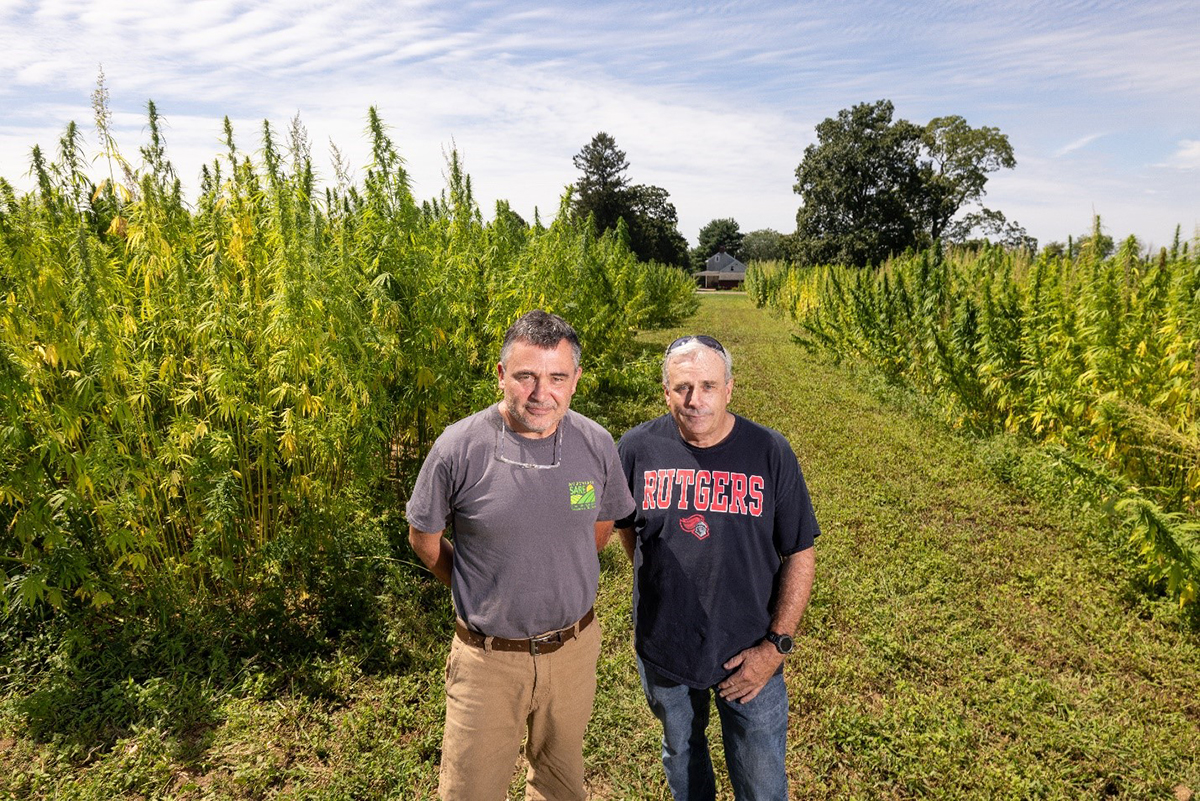

Industrial hemp was once an important crop in the United States prior to being banned from production in 1937. Recent farm bills once again paved the way for domestic production of hemp. But since hemp is a relatively new potential crop, New Jersey producers have many questions related to production. There has been limited research conducted in the northeastern United States, and none in New Jersey, to quantify the feasibility of hemp production. In 2019, a team of Rutgers University faculty coordinated efforts to research hemp production in New Jersey. Field experiments were conducted over two growing seasons in Pittstown, NJ to evaluate 10 hemp fiber and dual-use cultivars. Earn 1 CEU in Crop Management by reading this article and taking the quiz.
Industrial hemp is a non-psychoactive variety of Cannabis sativa L. grown for multiple end-uses including oil, fiber, and grain products. Industrial hemp was once an important crop in the United States prior to being banned from production under The Marihuana Tax Act of 1937 (Williams & Mundell, 2021). During the second World War, industrial hemp was identified as a critical product, due to difficulty in sourcing fiber for packaging, rope, and other key products and, as such, was commercially grown domestically. The 2014 farm bill once again paved the way for domestic production of hemp (Renee Johnson, 2018). The 2018 farm bill further directed the USDA to establish a national regulatory framework for hemp production in the United States. These rules were completed in early 2021 and took effect on Mar. 22, 2021.
Hemp production represents a new crop and market opportunity for New Jersey farmers with 2020 being the first season that production was legal in the state under the New Jersey Hemp Farming Act (New Jersey Department of Agriculture, 2019). There is interest from producers related to the feasibility of hemp production in New Jersey as it is grown for a wide variety of consumer and industrial products (Cherney & Small, 2016). Additionally, industrial hemp may fit nicely with existing crop rotation practices of other field crops and has been reported to result in returns that are similar to other traditional field crops (Thompson et al., 1998).
Natural fibers from plants such as hemp may provide the potential to enhance New Jersey agriculture and provide economic benefits for a wide variety of industries in the state. Both established and emerging industries may benefit from natural fibers while potentially benefiting the environment (Cherney & Small, 2016; Johnson, 2018; Schumacher et al., 2020). Hemp contains two general types of fibers: bast and hurd. Bast fibers develop in the outer stem of the plant and represent the long fibers that are ideal for making textiles, bio-composites, and insulation. The inner core of the stem contains the hurd fibers, which are shorter but ideal for use of plant-based filler in industry and the development of products like hempcrete and other green-building materials. Hemp fibers can be used to make a wide variety of products such as paper, high quality textiles, animal feed and bedding, bioplastics, and green building materials like hempcrete and hemp-based insulation (Williams, 2019).
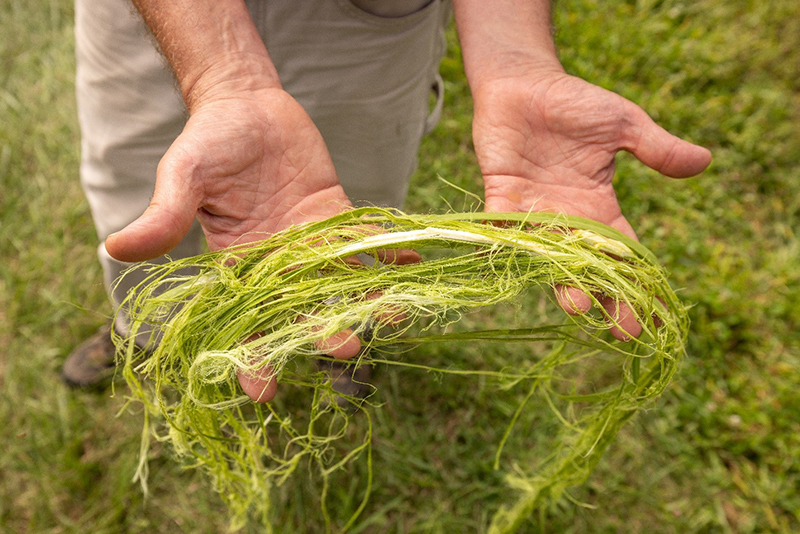
Since hemp is a relatively new potential crop, New Jersey producers have many questions related to production, including cultivar selection, insect and disease management, and many other agronomic considerations. In recent years, there have been several studies conducted to evaluate hemp as a potential crop (Darby et al., 2018; Walker, 2015) with a great deal of emphasis focused on the economic feasibility of hemp grown for various end-uses (Hanchar, 2019). Although there is interest and speculation related to hemp production, there has been limited research conducted in the northeastern United States, and none in New Jersey, to quantify the feasibility of hemp production. Agronomic research on hemp is a critical first step to develop appropriate extension recommendations as well as to gain an understanding of the suitability of this crop for New Jersey production.
In 2019, a team of Rutgers University faculty coordinated efforts to research hemp production in New Jersey. The “Rutgers Hemp Team” consists of faculty with expertise in agronomy, plant pathology, genetics, and laboratory analysis to investigate the potential to produce a quality, legal crop for various end products.
Field experiments were conducted over two growing seasons in Pittstown, NJ to evaluate 10 hemp fiber and dual-use cultivars. The study consisted of two key components: (1) the development of agronomic practices and production practices for fiber hemp production and (2) laboratory evaluation of the quality parameters for industrial uses of fiber hemp. Specific objectives of the research were to:
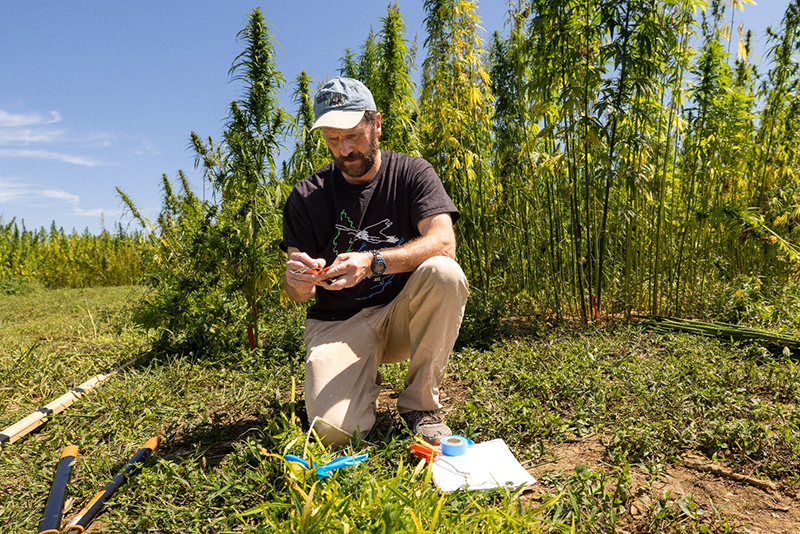
Identify appropriate varieties for commercial hemp fiber production in New Jersey agricultural production.
Measure agronomic traits, including stem diameter, plant height, time to flowering, and biomass yields.
Evaluate both bast fiber and hurd fiber characteristics using a variety of techniques to assess tensile strength, durability, and overall fiber quality.
Develop best management practices to enhance the yield and quality of hemp fiber production in New Jersey for commercial and applications.
Agronomic evaluation study
Field experiments were conducted during the 2023 and 2024 growing seasons at the Clifford and Melda Snyder Research and Extension Farm, Pittstown, NJ to evaluate fiber hemp cultivars. Ten cultivars, including fiber, dual-use, and grain varieties, were evaluated (Table 1). The test field consisted of a Quakertown silt loam, 2–6% slope (fine-loamy, mixed, active, mesic Typic Hapludults). Land preparation consisted of chisel plowing, followed by opposite passes with a heavy disc, cultipacking, and rolling to prepare a firm seedbed. Sonalan HFP herbicide (ethalfluralin) was applied at 2.0 pt/ac pre-plant incorporated for weed control. Fertilizer was applied pre-plant at 125-0-25 lb/ac broadcast.
Table 1. Varieties grown at Snyder Farm in Pittstown, NJ in 2023 and 2024. | ||
ID no. | Variety | Source (DU = dual use, F=Fiber) |
1 | Carmenecta | International Hemp DU |
4 | Bialobrzeskie | Kings AgriSeed F |
6 | Anka | UniSeed DU |
7 | Angie | Parkland Industrial Hemp Growers F |
8 | Quida | Parkland Industrial Hemp Growers F |
9 | T3H2006 | Verve Seeds DU |
10 | Santhica 70 | Konopi US DU |
11 | Muka 79 | Konopi US F |
12 | Fibror 79 | Konopi US F |
13 | Futura 83 | Konopi US DU |
Plots were 6 ft wide by 50 ft long, planted at 40 lb/ac at ¼ inch deep. Varieties were planted on May 30, 2023 with a Great Plains no-till drill at 7.5-inch drill spacing. Plots were irrigated as needed with a traveler irrigation system. During the growing season, plots were evaluated for emergence, plant height, disease incidence, weed pressure, and insect pressure. Plants were harvested on Aug. 23, 2023 and Sept. 13, 2024 by cutting with a sicklebar mower. A 10-ft subsample was taken from each plot. Fresh weight was measured for each replicate. Plants were dried for 72 hours and dry weights measured.
The hemp varieties were field-retted for three weeks, dried, and then prepared for analysis. Three fiber-processing stages were used: scutching, hackling, and degumming. Scutching separates the hemp bast fibers (outer fibrous layer) from the woody core (shives or hurd) in the stalks. Hackling aligns the fibers by combing them, removes remaining impurities, and divides long and short fibers. Degumming removes binding materials (like lignin, pectin, and hemicellulose) that make the fibers stiff and coarse, rendering them softer and more flexible.
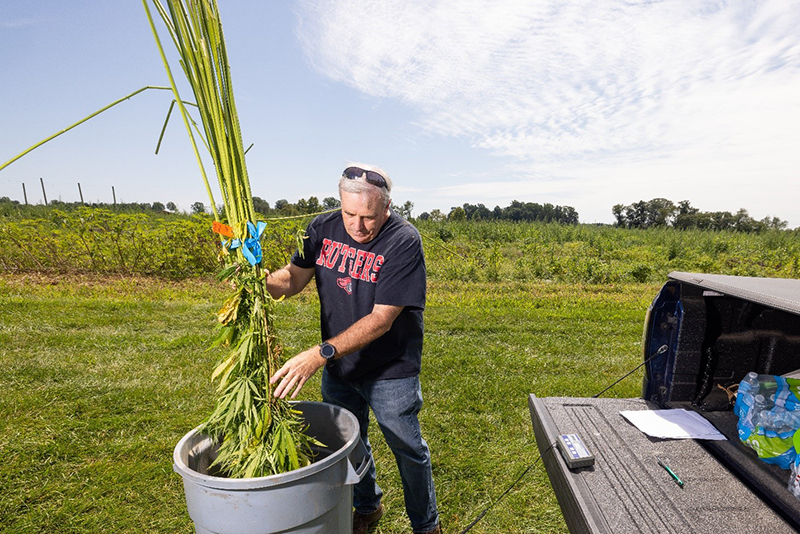
The fiber diameter and tensile strength of five different hemp varieties were measured. A scanning electron microscope (SEM) was used to quantify fiber diameter heterogeneity for five varieties. Mean fiber diameter and variance values were derived by analyzing measurements from 100 SEM images for each variety, using ImageJ software in accordance with ASTM D7879 standards.
Results
Five agronomic traits were analyzed, including 100-seed weight, percentage germination, stem diameter post flowering, plant height, and yield (Table 2). Seed size varied greatly among varieties, ranging from 1.25 g/100 seeds to more than 2.0 g/100 seeds. Germination also varied greatly ranging, from <30% to >85% germination. As is the case with all agronomic crops grown commercially, uniform seed size, purity, and germination percentage are critical factors for successful production.
Table 2. Plant height, stem diameter, and yield for hemp varieties grown at Snyder Farm in Pittstown, NJ in 2023 and 2024. | |||
Variety | Plant height (m) | Stem diameter (cm) | Yield (dry lb/ac)a |
Angie | 2.36 b | 7.35 b | 2237.76 abc |
Anka | 2.59 ab | 7.08 b | 2144.52 abc |
Bialobrzeskie | 2.30 b | 5.35 b | 1503.49 c |
Carmenecta | 3.13 a | 11.89 a | 2657.34 abc |
Fibror79 | 2.27 b | 6.89 b | 2191.14 abc |
Futura83 | 2.65 ab | 8.81 ab | 3030.30 ab |
Muka79 | 2.44 b | 7.82 b | 1678.32 bc |
Quida | 2.31 b | 8.25 ab | 2051.28 abc |
Santhica70 | 2.75 ab | 7.67 a | 3449.88 a |
T3H2006 | 2.26 b | 7.17 b | 2237.76 abc |
| |||
2024 agronomic traits | |||
Angie | 2.36 b | 7.35 b | 1002.10 abc |
Anka | 2.59 b | 7.08 b | 1136.99 abc |
Bialobrzeskie | 2.30 b | 5.35 b | 828.65bc |
Carmenecta | 3.13 a | 11.89 a | 1426.06 a |
Fibror79 | 2.27 ab | 6.89ab | 1117.72abc |
Futura83 | 2.65 ab | 8.81 ab | 1348.98ab |
Muka79 | 2.44 b | 7.82 b | 732.30c |
Quida | 2.31 b | 8.25 ab | 809.38 bc |
Santhica70 | 2.75 ab | 7.67 b | 1214.08 abc |
T3H2006 | 2.26 b | 7.17 b | 886.47abc |
| a Any value within a column with a different letter is different according to Tukey’s HSD Range test (P = .05). | |||
There was no significant interaction among agronomic traits evaluated by year. Differences were observed among varieties with a trend towards fiber varieties being taller and having larger stem diameters in both 202 and 2024. In general, the taller varieties tended to produce greater yields. Large differences were observed across years in plant height and subsequent yield. Several factors, including weather during the 2024 growing season being considerably drier than 2023 and the later planting date in 2024, may have contributed to a trend towards lower yields. More research is needed to determine the impact that these and other production factors may have on yield and quality. All of the varieties tested below the state and federal limits for THC (data not shown).
Fiber bundle strength, measured in centinewtons per tex (cN/tex), quantifies the tensile strength of a bundle of fibers. Tex is a unit of measure for linear mass density and is defined as the mass in grams per 1,000 meters of fiber. In the context of fiber bundle strength, tex refers to the weight in grams of 1,000 meters of the fiber bundle. This means that a fiber bundle with a strength of 50 cN/tex can withstand a tensile force of 50 cN for every tex unit of its linear mass density. A Pressley fiber strength tester was used to generate this data (meets the standard for ASTM D1445). These values indicate how much force is required to break a specific mass of fibers and is commonly used in the textile industry to assess durability and suitability for various applications (Table 3).
Table 3. Fiber diameter and bundle strength for five hemp varieties grown at Snyder Farm in Pittstown, NJ in 2023 and 2024. | ||
Variety | Fiber diameter (µm) [cv%] based on scanning electron microscope | Fiber bundle strength (cN/tex) [cv%] |
Bialobrzeskie | 35.63 [42.28]
| 25.82 [5.33]
|
Henola | 38.79 [40.33]
| 23.48 [17.5]
|
Santhica 70 | 30.33 [47.5]
| 29.18 [18.38]
|
Fibror 79 | 36.75 [43.66]
| 27.24 [14.36]
|
Futura 83 | 44.65 [46.74]
| 31.09 [15.92]
|
The fiber diameter samples show a mean range from 30.33 to 44.65 (µM) with a coefficient of variation (CV) above 40%, indicating notable variability within samples. Santhica 70 shows the thinnest average fiber from the five with Futura 83 having the highest average fiber thickness. The fiber bundle strength mean range was 23.48 to 31.09 (cN/tex) with the average CV of the fiber bundle strength means measurements being 14.3. Futura 83 has the highest tensile strength while Henola presents the weakest from this group. From this initial analysis, Santhica 70 offers a balance of fine diameter with high tensile strength, making it well suited for applications requiring strong, but fine, fibers. These findings highlight both the variability in fiber properties across hemp species and the potential for selecting varieties based on specific industrial requirements, such as strength and diameter for textile manufacturing.
Variety selection
Variety selection will be key to successful production of all hemp types for many reasons; one of the most important varietal traits is days to maturity (latitudinal adaptation). When growing hemp for fiber-only production, seeding rate is often double what is used for grain production. Recommended seeding rates range from 40 to 60 lb pure live seed (PLS)/acre. Significant research is limited regarding seeding rates to achieve high-yielding and good quality fiber. Planting too low a plant population will not provide competition for early-season weed control. Hemp for fiber is planted in dense stands to promote taller height and discourage branching and flowering, thus maximizing fiber yields. Higher seeding rates encourage a higher quality fiber crop. Good quality hemp fiber comes from tall and thin plants. Higher seeding rates result in high plant population with tall thin plants with longer internodes.
Harvesting fiber crops is more complex than harvesting grain. Fiber crops will require retting prior to baling. Conventional hemp fiber production relies on field drying and straw retting—a process by which microbes degrade the pectin layer between the plant’s bast fibers and woody core. Sufficient moisture assures the microbial degradation processes occur, but dry weather also is required to ensure the hemp stalks can be baled, and weather conditions can affect fiber quality. Field-retting hemp requires skills similar to producing high quality hay. Successful field retting depends on weather conditions just as does making good hay. Harvesting hemp stems for fiber with standard hay equipment can be difficult. Current common practice involves mowing by sickle-bar or mower-conditioner without conditioning/macerating, retting in the field, and then baling. Hemp is swath- or windrow-cut for fiber production at about 8 inches from the soil surface between early bloom and seed set when the lower leaves of female plants begin to yellow.

As we begin to have more experience with hemp production, we are learning that varieties are regionally specific. Farmers looking to enter the hemp market for the first time will need to understand varietal options that are available and carefully determine which hemp variety is most suitable to their production and marketing strategies. In addition, there is significant need for more research on agronomic practices, weed and disease management, and post-harvest management. As this industry continues to develop, more research is needed to quantify the market potential, production costs, and commodity prices.
References
Cherney, J. H., & Small, E. (2016). Industrial Hemp in North America: Production, Politics and Potential. Agronomy, 6(4), 58. https://doi.org/10.3390/agronomy6040058
Darby, H., Gupta, A., Ruhl, L., & Ziegler, S. (2018). Cannabidiol Hemp Indoor/Outdoor x Variety Trial. University of Vermont Extension. https://www.uvm.edu/sites/default/files/media/2018_CBD_Indoor_Outdoor_x_variety_trial.pdf
Hanchar, J. J. (2019). Economics of producing hemp for CBD in NY: Costs of Production, land based, raised bed, plastic mulch, drip tape irrigation production system, initial estimates, 2019. Cornell University/College of Agriculture & Life Sciences/NWNY Dairy, Livestock and Field Crops Program. https://hemp.cals.cornell.edu/resource/economics-producing-hemp-cbd-ny-costs-production-land-based-raised-bed-plastic-mulch-drip-tape-irrigation-production-system-2019/
Johnson, R. (2018). Hemp as an agricultural commodity. Congressional Research Service. https://sgp.fas.org/crs/misc/RL32725.pdf
Schumacher, A. G. D., Pequito, S., & Pazour, J. (2020). Industrial hemp fiber: A sustainable and economical alternative to cotton. Journal of Cleaner Production, 268. https://doi.org/10.1016/j.jclepro.2020.122180
Thompson, E. C., Berger, M. C., & Allen, S. N. (1998). Economic impact of industrial hemp in Kentucky. Center for Business and Economic Research, University of Kentucky.
Walker, E. (2015). Status of industrail hemp in Tennessee. University of Tennessee Extension. https://www.tn.gov/content/dam/tn/agriculture/documents/planthealth/2018/StatusOfIndustrialHempinTN_102218_W777.pdf
Williams, D., & Mundell, R. (2021). An introduction to industrial hemp and hemp agronomy. University of Kentucky College of Agriculture, Food and Environment Cooperative Extension Service. https://www2.ca.uky.edu/agcomm/pubs/ID/ID250/ID250.pdf
Williams, D. W. (2019). Industrial hemp as a modern commodity crop. ASA, CSSA, and SSSA. https://acsess.onlinelibrary.wiley.com/doi/book/10.2134/industrialhemp
Self-study CEU quiz
Earn 1 CEU in Crop Management by taking the quiz for the article at https://web.sciencesocieties.org/Learning-Center/Courses. For your convenience, the quiz is printed below. The CEU can be purchased individually, or you can access as part of your Online Classroom Subscription.
What is a difference between bast and hurd fibers?
a. Bast fibers come from the inner core of the stem while hurd fibers develop in the outer stem.
b. Hurd fibers are longer while bast fibers are shorter.
c. Hurd fibers are ideal for use in the development of products like hempcrete and other green-building materials while bast fibers are ideal for making textiles.
d. Bast fibers are ideal for use in the development of products like hempcrete and other green-building materials while hurd fibers are ideal for making textiles.
2. Which of the following was NOT a hemp variety grown in the study?
a. Anka.
b. Konopi 70.
c. Carmenecta.
d. Santhica 70.
3. Researchers analyzed four agronomic traits in the study: 100 seed weight, percentage germination, plant height, and yield.
a. True.
b. False.
4. Tex, a unit of measure for linear mass density, is defined as the mass in grams per
a. 1 meter of fiber.
b. 50 meters of fiber.
c. 100 meters of fiber.
d. 1000 meters of fiber.
5. Which variety showed the highest average fiber thickness?
a. Fibror 79.
b. Futura 83.
c. Santhica 70.
d. Henola.
6. Which variety showed the weakest tensile strength?
a. Fibror 79.
b. Futura 83.
c. Santhica 70.
d. Henola.
7. What is retting?
a. The process by which microbes degrade the pectin layer between the plant’s bast fibers and woody core.
b. The process by which hemp is planted in dense stands to promote taller height.
c. The process of cutting down hemp for fiber production at about 8 inches from the soil surface.
d. The process of cutting down hemp for fiber production at about 4 inches from the soil surface.
8. In 2023, ____ had the largest yield, while _____ had the largest plant height.
a. Carmenecta, Futura83
b. Futura83, Carmenecta
c. Santhica70, Carmenecta
d. Futura83, Santhica70
9. All varieties in the study tested below the state and federal limits for THC.
a. True.
b. False.
10. The ___ farm bill directed the USDA to establish national regulations for hemp production in the United States.
a. 2008
b. 2014
c. 2018
d. 2024
Text © . The authors. CC BY-NC-ND 4.0. Except where otherwise noted, images are subject to copyright. Any reuse without express permission from the copyright owner is prohibited.



